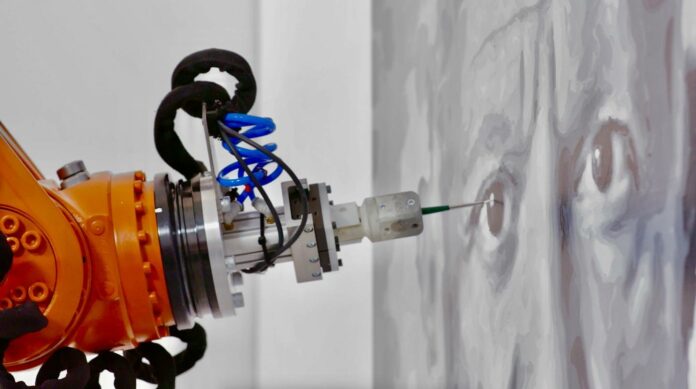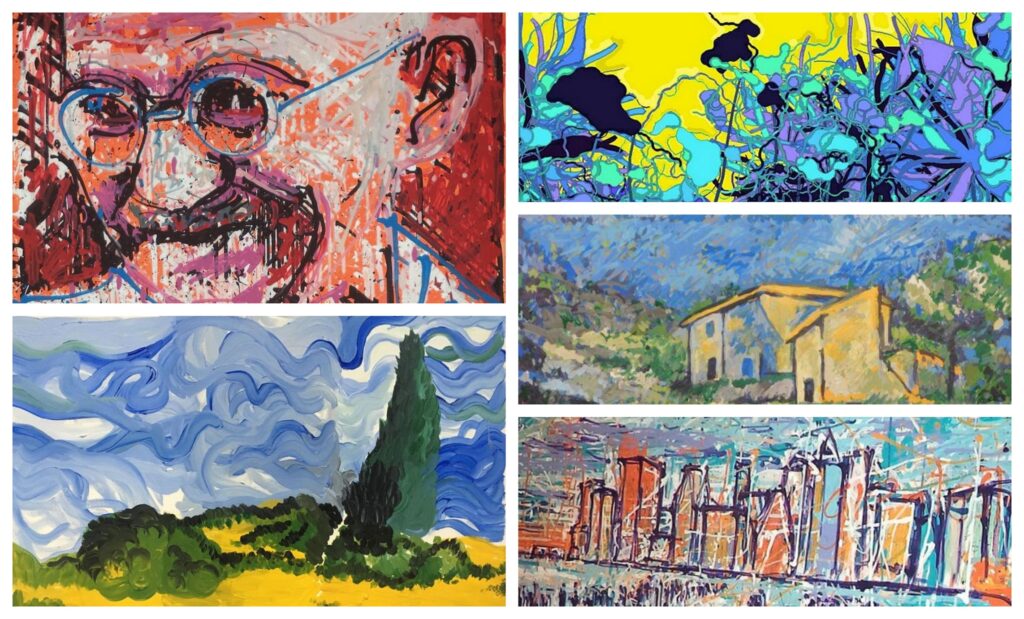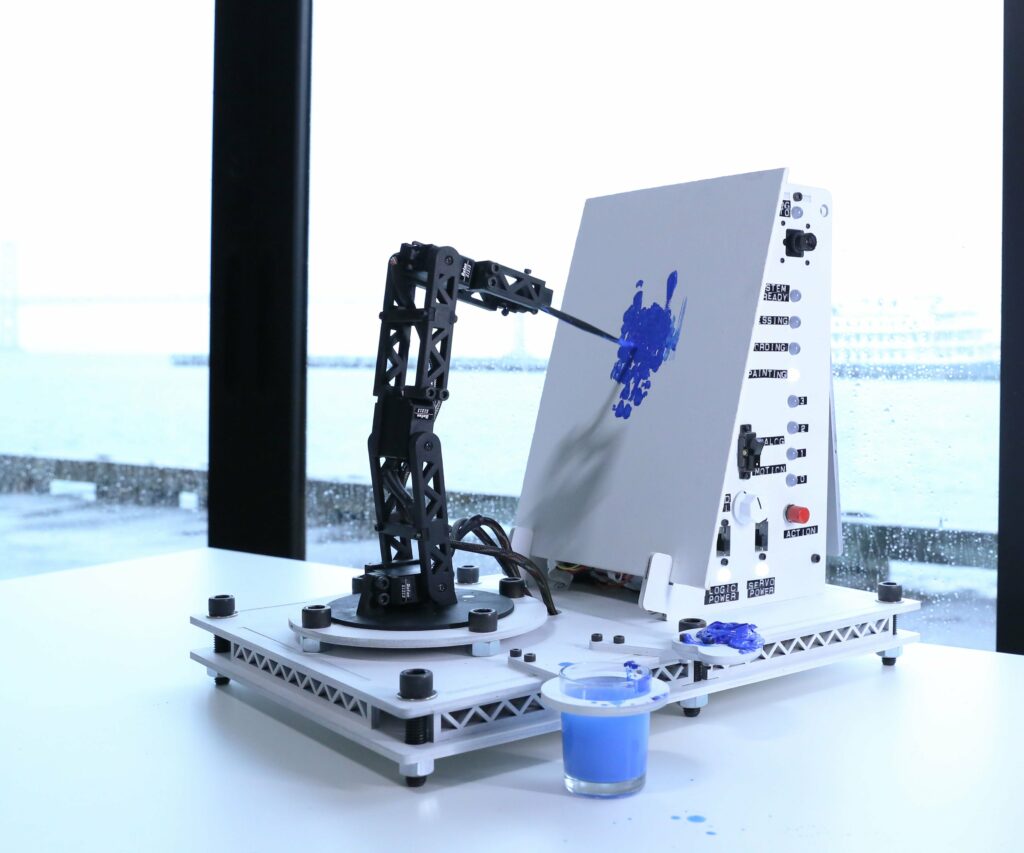By George Angelakis,
It is highly probable that, at some point, while browsing online, you have come across a video or a picture of a robot that can draw simple faces by using a pencil or coal. The truth is, that this depiction of drawing robots is quite outmoded. Research and A.I. technology has made impressive progress in the field of human imitation since then. Nowadays robots are capable of creating marvellous, complicated paintings, even by employing different styles according to the given theme. With that being said, let us play a small quiz. I want you to take a look at the paintings below and try to guess which are the ones created by robots and which by real people:
Have you made your guesses? Great. Now I regret to inform you that each and every painting in this collage has been created by a robot! That is an amazing and a bit scary feat for a piece of silicon that is performing on zeros and ones. Usually, if you have been following my articles, you may have noticed that I am all for progress and technology, but honestly, this is where I draw the line. Let me elaborate.
Art is all about conveying emotion. It is the reason that early people started drawing on cave walls, the reason DaVinci made Mona Lisa and so on. So, by seeing these paintings and by being fooled to think that they were created by human beings, a paradox is being created that I am not at all comfortable with: It either means that robots are already extremely capable of imitating emotion or that art was not about conveying emotion in the first place.
If the first one is the case, then a very concerning notion is brought to light. Over the decades, we have kept reassuring ourselves that we are better than robots in the sense that we are actually capable of emotion. Yet, in this case we cannot tell real and manufactured emotion apart. Let that sink in: a piece of silicon has just tricked you into thinking it was a real human being. The worst part is, though, that it is still the year 2020. When we are capable of creating a 100 percent faithful imitation to a human voice, a movement or a feeling, we will have no real way of telling a robot from a human apart; this time may be in the very distant future, but there is no way of guarantying that. We cannot keep up with technological process, or else everyone would be well-aware that robots are already capable of such feats.
If the second one is the case -that art never really conveyed emotion, that is- then we, and so many people in the past, have led a life endorsing the expression of the human soul in a medium that never did that to begin with. What if art is only a form of “pseudo-expression”, nothing more than the projection of what the artist could feel? And the more one thinks about it, the more it makes sense. There are plenty of examples of artists out there who, when feeling happy and optimistic, have painted the dimmer, most pessimistic paintings of their careers. Then again that does not necessarily prove that the conveyance of emotion is not there, just that art is not always about reflection but simple transmission of emotion.
In the very end, this conundrum should not have a meaning of existence for simply we are clueless about when or even if, our conclusions will have an impact on our daily lives. The only fact that remains is that, nowadays, in an increasing number of fields, a few lines of code can outperform or match a human effort. Today it is art, tomorrow it can be tutoring, performance arts or even politics.






